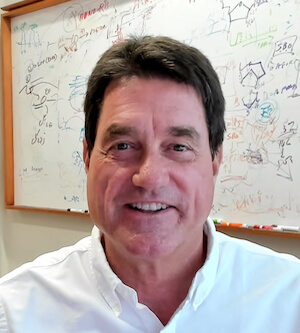Steven Dowdy, PhD, received his PhD in molecular genetics from the University of California at Irvine and was a Damon Runyon Postdoctoral Fellow at the Whitehead Institute, MIT. In 1994, Dr. Dowdy joined Washington University School of Medicine as an assistant professor, and in 2001, he joined the Department of Cellular and Molecular Medicine at the University of California at San Diego School of Medicine, where he is a professor. From 1994 to 2012, he was an investigator at the Howard Hughes Medical Institute. His early research focused on understanding the molecular basis of G1 cell cycle deregulation during oncogenesis by the RB and p16 tumor suppressor genes, and cyclin complexes. Later work has focused on the synthetic chemistry, development, and delivery of novel siRNA and ASO therapeutics to treat human disease. His current work is focused on addressing the rate-limiting delivery step of all RNA therapeutics by the synthesis of biomimetic endosomal escape molecules.
Co-Investigator
Steven Dowdy, PhD
University of California at San Diego
Steven Dowdy, PhD, received his PhD in molecular genetics from the University of California at Irvine and was a Damon Runyon Postdoctoral Fellow at the Whitehead Institute, MIT. In 1994, Dr. Dowdy joined Washington University School of Medicine as an assistant professor, and in 2001, he joined the Department of Cellular and Molecular Medicine at the University of California at San Diego School of Medicine, where he is a professor. From 1994 to 2012, he was an investigator at the Howard Hughes Medical Institute. His early research focused on understanding the molecular basis of G1 cell cycle deregulation during oncogenesis by the RB and p16 tumor suppressor genes, and cyclin complexes. Later work has focused on the synthetic chemistry, development, and delivery of novel siRNA and ASO therapeutics to treat human disease. His current work is focused on addressing the rate-limiting delivery step of all RNA therapeutics by the synthesis of biomimetic endosomal escape molecules.


